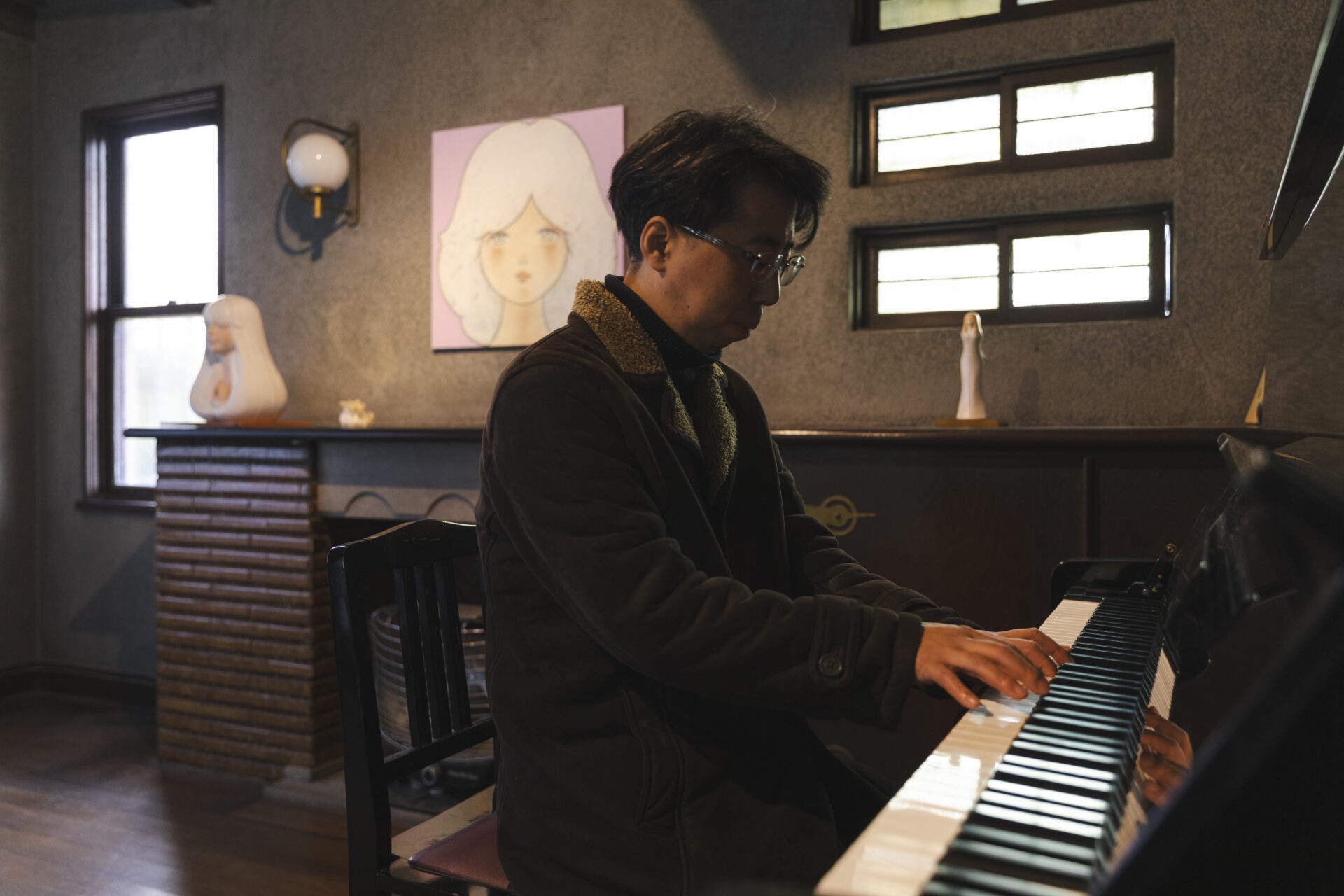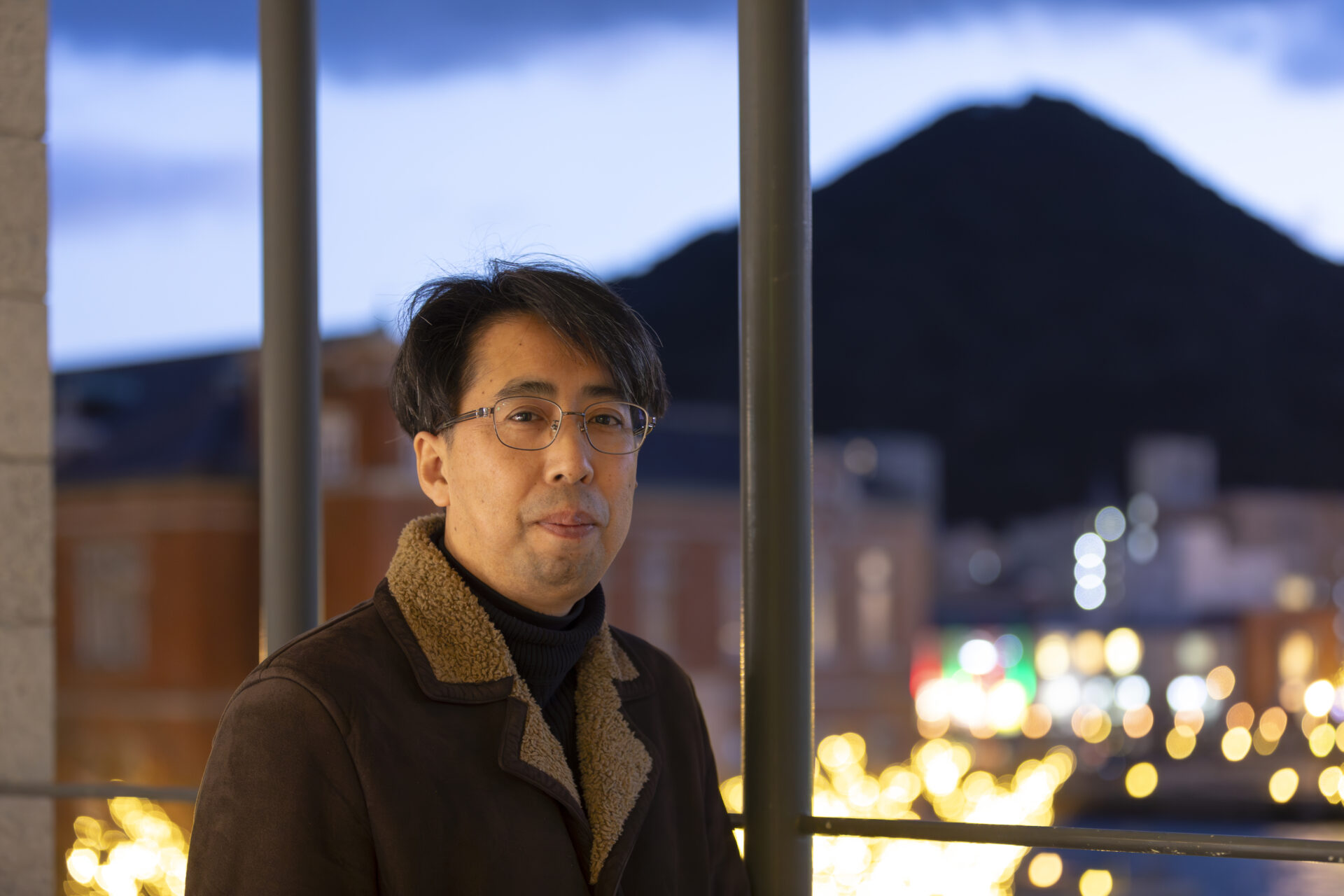
INTERVIEW

MATSUURA TAKASHI
見えない世界を、見える世界に取り出す時、
Unveiling the Invisible into the Visible:
結びというチカラが湧く。
The Power of Connection Emerges
門司港美術工芸研究所所長。
これが彫刻家松浦孝氏のもう一つの肩書きです。
ここに至るまでの松浦氏は、紆余曲折がありました。
だけど、松浦氏に取っては、その道程も、現在の肩書きさえも大して意味をなさないことかもしれません。
Director of the Mojiko Art Research Center.
This is another title that sculptor Takashi Matsuura holds. Yet, the journey that led him here was far from straightforward. And for Matsuura, the path he has taken—or even the title itself—may hold little significance.
一見、飄々として、今、目の前のやるべきことに向かっているだけの松浦氏はいつもどこか、遠い宇宙(そら)の上から俯瞰しているかのように見えます。
『起こるべきことが、今、起きている』とでも言いたいかのように。
表現に対してもそう。何を作り、表現するかというよりも、何が生まれてくるのか、その答えがわからないまま、手を動かし、起こることに自らをゆだね続けているかのようなのです。
それほど、この人の作る、いや、生きるベクトルは常に内面に向かっていると言っても過言ではありません。
At first glance, Matsuura seems nonchalant, focused only on the tasks before him. Yet, there’s always something about him that feels as though he’s viewing everything from a distant cosmos, observing with detachment. As if to say, "What is meant to happen is happening now."
His approach to artistic expression mirrors this perspective. Rather than deciding what to create or how to express himself, he seems to surrender to the process—allowing his hands to move and letting the answers emerge through the act of creation. It wouldn’t be an overstatement to say that his life and work are both deeply inward-facing, always guided by an internal compass.
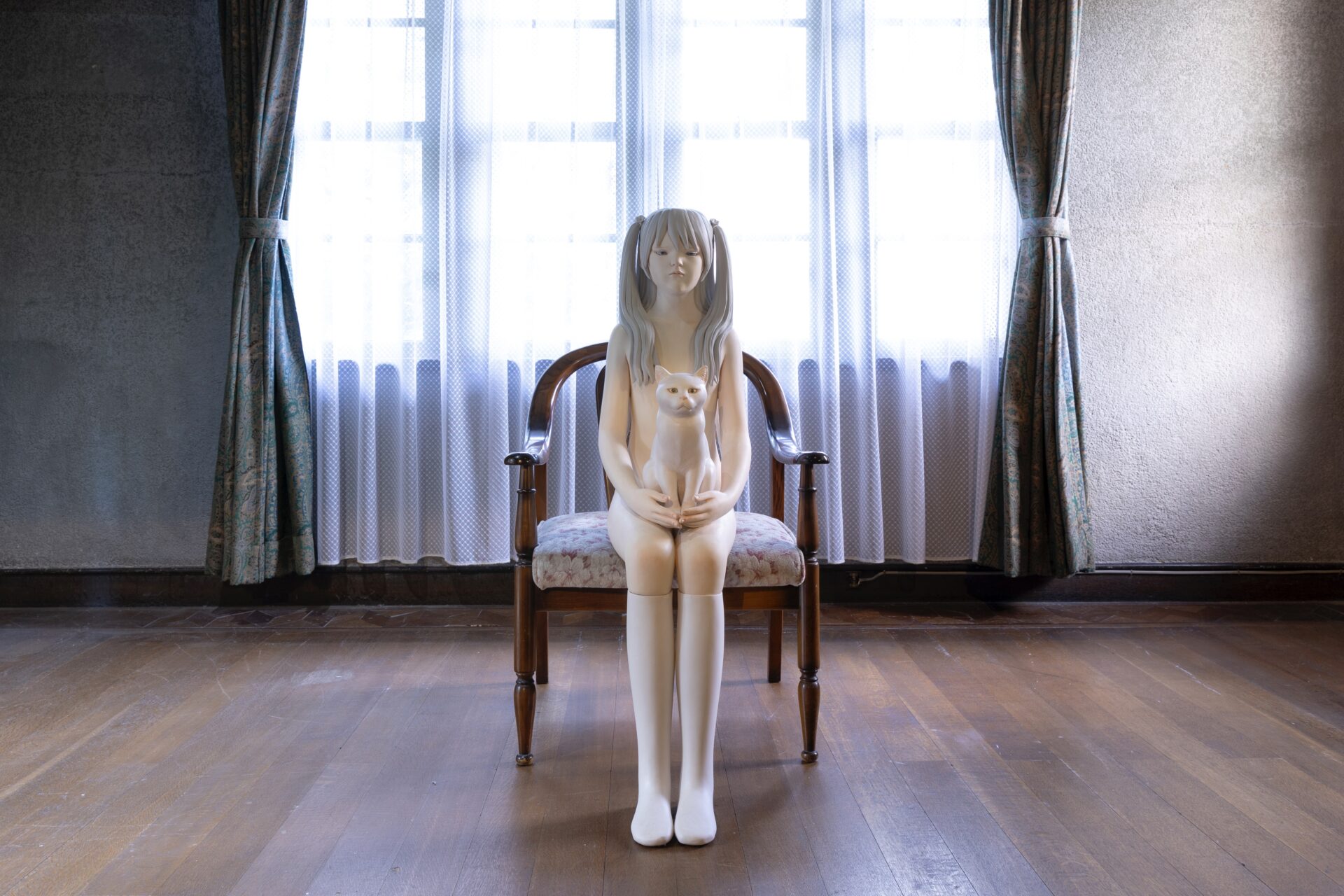
幼少の頃から馴染んだ触感的なモノづくり
A Lifelong Bond with Tactile Craftsmanship
1973年、松浦孝氏は福岡県北九州市に生まれます。生まれも育ちも門司っ子。幼少の頃から裏山の斜面で穴を掘ったりして遊んでいることが好きだった子どもでした。学生時代は文化系というより、身体能力が高かったこともあり、推薦で進学もできそうなレベルでしたが、ただ本人は競い合うことに疲れ、高3の夏開けに美大に進むことを決意。美術向けの予備校に通い、デッサンを続けていたものの、紙の中に作品を納めるのが苦手でした。
In 1973, MATSUURA TAKASHI was born in Kitakyushu City, Fukuoka Prefecture. A native of Moji, he grew up playing on the slopes of the hills behind his home, digging holes and exploring nature. Though physically gifted and capable of advancing through school on athletic recommendations, Matsuura found himself weary of competition. In the summer of his senior year in high school, he decided to pursue art instead. Despite attending preparatory classes and practicing drawing, he struggled with confining his work within the boundaries of paper.
見かねた講師が伝えたことは「彫刻をやれば東京の大学に行けるぞ」と。その言葉は、子供の頃からの理屈ではない、自らの触感的なことが好きだったことを松浦氏に思い出させてくれたのです。予備校では彫刻志望が1人しかいなかったため、たった1人であてがわれた小屋のようなアトリエで制作する日々は楽しかったというほど制作に夢中になる日々。
Noticing this, one of his instructors suggested, “Why not try sculpture?, you could get into a university in Tokyo.” This suggestion sparked a memory of his love for tactile experiences, rooted in his childhood. With only one sculpture student at the preparatory school, MATSUURA spent his days immersed in solitary creation in a small, shed-like studio—a time he recalls with fondness and excitement.
その後、東京造形大学美術専攻卒業後、筑波大学院彫塑コースを修了したものの、その間、様々な疑問にもぶつかってしまいます。人体彫刻はなぜ、体を作るのか?なぜブロンズなのか?自分の作りたいものは何なのか?
MATSUURA later graduated from Tokyo Zokei University, majoring in fine arts, and went on to complete the Sculpture Program at Tsukuba University’s graduate school. However, along the way, he began to grapple with existential questions: Why create human figures in sculpture? Why use bronze? What is it that I truly want to make?
答えの出ないまま、社会に出て、テーマパークに就職。そこで求められるままモノ作りを始めます。研究を重ねての制作は楽しく、居心地が良かったけれど、そこで家庭の事情から故郷に引き戻されることに。自らの制作と生活のための仕事。学生時代の答えが出ないままの自分に再び出会うことになるこの時期が、人生で最も落ち込んでいたといいます。
Unable to find answers, MATSUURA eventually entered the workforce, securing a position at a theme park where he created art as required. The work was engaging and enjoyable, but family circumstances brought him back to his hometown. Balancing his artistic pursuits with practical work, he found himself revisiting the same unanswered questions from his student years. This period, he recalls, was one of the most challenging in his life.

しかし、松浦氏の内から湧いてくる疑問や苦悩は、きちんと道を示していることを感じます。自分が何者であり、何を探しているのか?自らの今の居場所はどこにあるのか?言葉にすると陳腐なこの問いさえも、その時々で、松浦氏は思い出すこと、そしてその触感を、手繰り寄せているかのようなのです。
Yet, his doubts and struggles seemed to quietly guide him. Who am I? What am I searching for? Where do I belong? Though such questions may sound banal when articulated, MATSUURA seemed to grasp at their essence and follow their tactile threads.
だからこそ、美術を諦めようとした際に恩師から掛かってきた電話での、「今までの成果を地元の人に見せないとダメだ」という言葉に突き動かされたのです。
It was during this time, as he was on the verge of giving up on art, that a phone call from his former mentor changed everything. “You need to show your work to the people in your hometown,” the mentor insisted. Spurred by these words, MATSUURA embarked on his first solo exhibition.
「人からどう思われてもいい、初めての個展が最後になってもいい」
仕事をする傍ら、一年かけての制作した作品は自分のためだけのはずでしたが、ちゃんと人に伝わり、感動を与えられていたのが嬉しかったと、松浦氏は当時を思い出して話します。
“I didn’t care what people thought. I told myself, even if my first solo exhibition were also my last, it would be fine,” MATSUURA recalls. The works he created over the span of a year, meant solely for himself, ultimately resonated with others, moving them deeply. The experience was unforgettable.
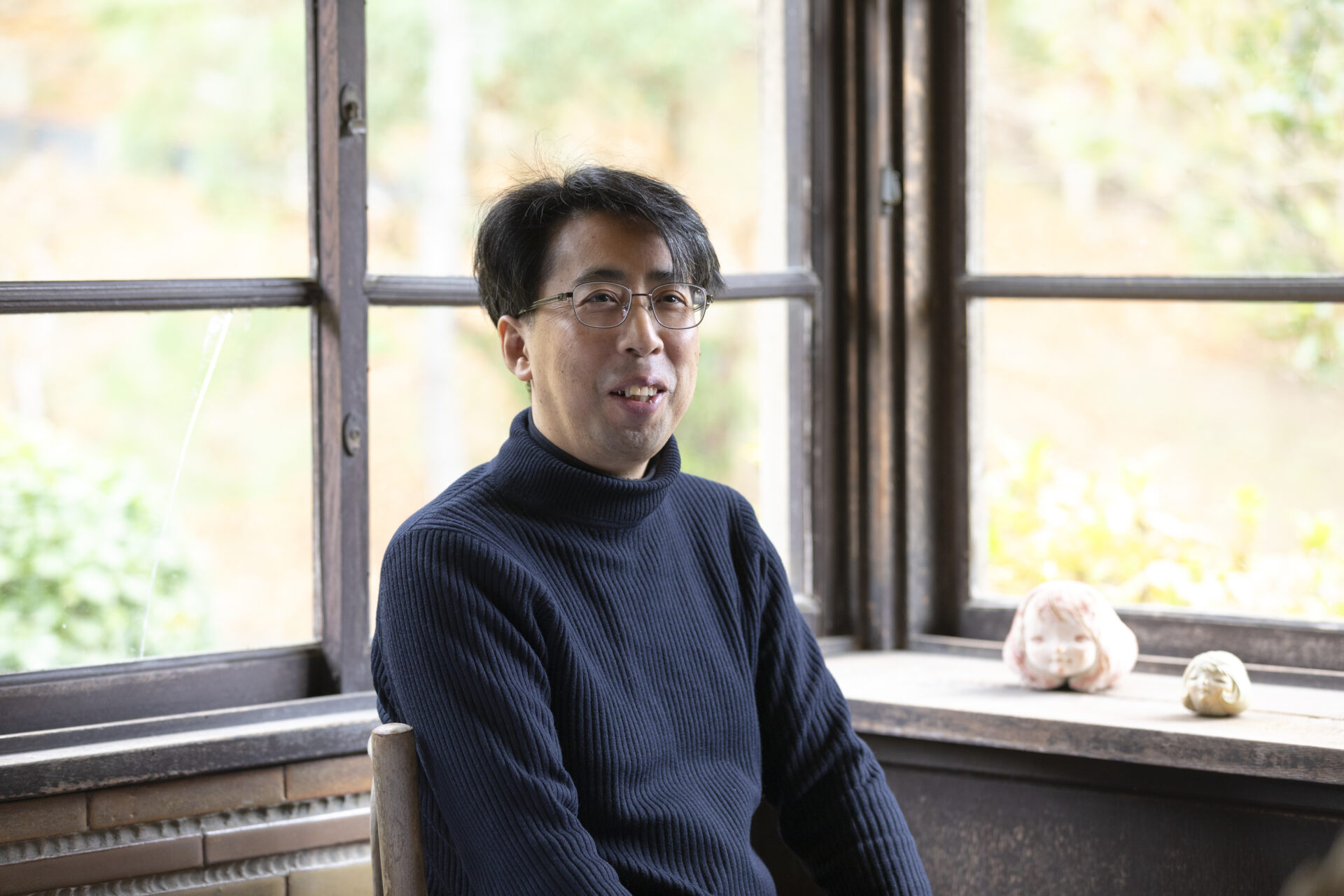
長年抱いていた自分の表現、作りたいものを作り、人に伝わり、門司港美術工芸研究所の所長にも就任。だけど、それは決して終わりではなく、さらなる独自のスタイルを引き寄せるための始まりに過ぎなかったのです。
Over the years, he began to focus on expressing his own vision and connecting with others through his creations. This journey eventually led him to assume the role of Director at the Mojiko Art Research Center. Yet for MATSUURA, this was not an endpoint but merely a beginning—a starting point for further exploring and refining his unique style.
辿り着いたのは縄文というルーツ
Finding Roots in the Jomon Era
空(くう)を見る少女、手を合わせる幼女、母のような眼差し、巫女のような崇高さ、人物像は、祈りにも似て、壮大な自然をも感じさえ、一つ一つの作品から目を離せなくなります。作品を目にしたある者は博多人形のようだといい、ある者は土偶のようだといい、ある者は近親者や、懐かしい心象風景を彷彿させると感想を伝えます。そのどれにも答えはあり、正解はないのだと、松浦氏は言います。人が見て呼び起こされたことを言語化することで、松浦氏もまた、見えない世界を知ることになります。
A girl gazing into the void. A child pressing her hands together in prayer. A figure with a maternal gaze, exuding the reverence of a shrine maiden. MATSUURA’s sculptures of human forms evoke a sense of prayer, as if embodying the vastness of nature itself. Each piece seems to draw the viewer into an unspoken dialogue. Some have compared his works to Hakata dolls, others to ancient dogū figurines, while others still say they evoke memories of loved ones or nostalgic landscapes.
MATSUURA, however, believes there is no single correct interpretation. "Every reaction is valid," he says. By verbalizing what they feel when they see his work, MATSUURA himself gains insight into an unseen world, one he wouldn’t have known otherwise.
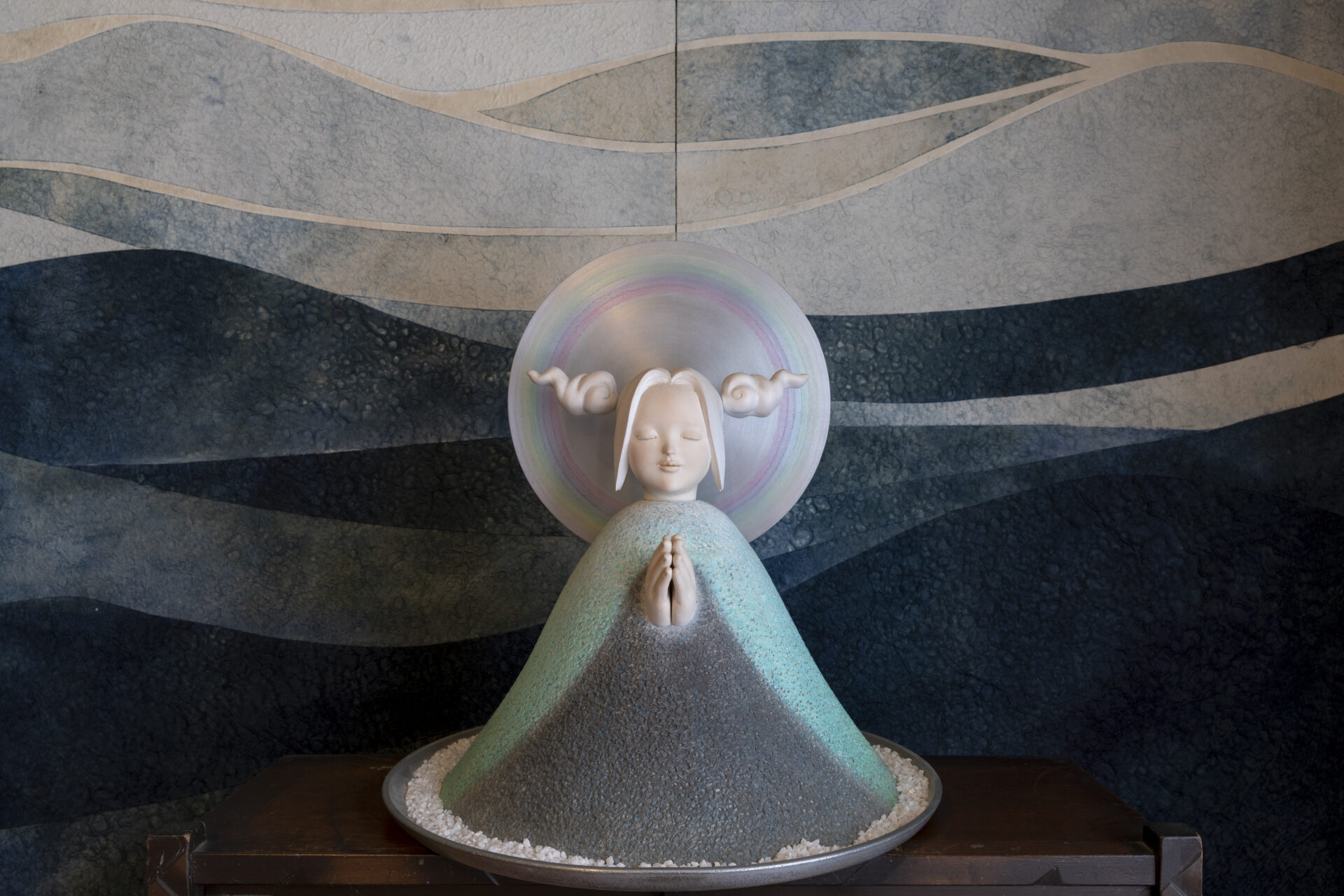
だからこそ、自ら作る時に言語化することなく、現れたモノ、その表情と対話することになるのだと。
This is why, when he creates, MATSUURA refrains from articulating his thoughts. Instead, he interacts with what emerges—the forms, the expressions—as though in conversation.
石膏という工程に違和感を持った後、粘土を800℃前後で焼成したテラコッタ(素焼き)の技法で作品を制作。信楽焼の土で素焼きした作品は、縄文土器にも似て、松浦氏は初めて今までの違和感、そして自らの根っこがどこにあったのかを感じ取るのです。
After growing disenchanted with traditional plaster molding techniques, MATSUURA began working with terracotta, shaping clay and firing it at around 800°C. Using Shigaraki clay, he creates sculptures that resemble Jomon pottery, capturing an essence that had eluded him until then. For the first time, MATSUURA felt a sense of connection—to his work, to himself, and to his roots.
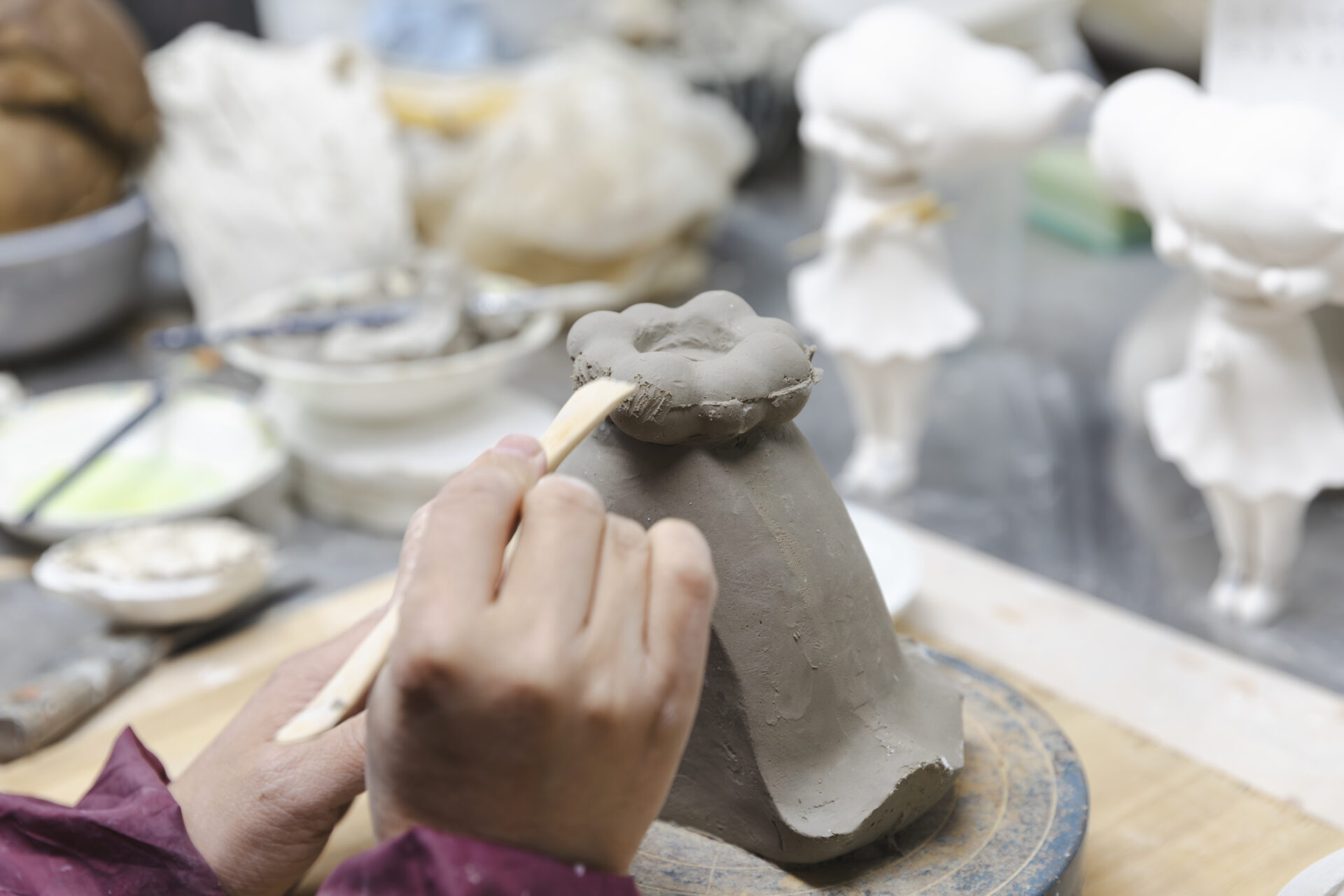
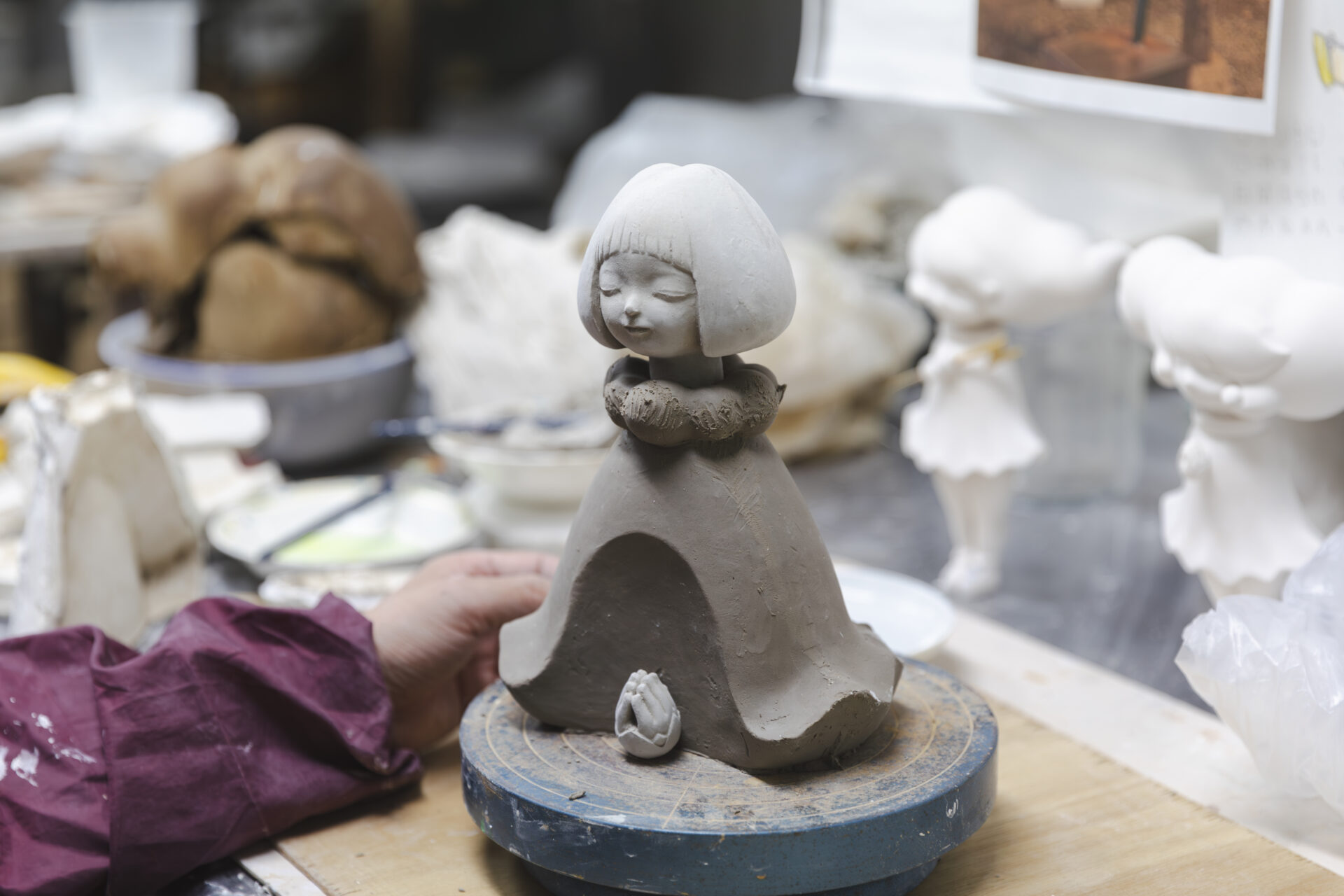
幼少の頃から常に誰かに何かに見られている感覚が拭えなかった。すべてのものには意識があり、山のフォルム、花のフォルム、精霊、母に連れられて行った三角山の記憶。アニミズム的な感覚、縄文時代への憧れ、そして自分が生み出すもの、そのすべてがリンクして、松浦氏の造形へのルーツに辿り着いたかのようでした。
From childhood, MATSUURA had always felt as though he was being observed by something unseen. He believed everything around him—the mountains, the flowers, the spirits of nature—possessed consciousness. Memories of Mount Misumi in Moji, where his mother would take him as a child, left an indelible impression. These animistic experiences, combined with his admiration for the Jomon period and the objects he creates, all seem to converge, tracing back to the core of his artistic identity.
自身の軸に触れ、作風のスタイルが決まったかと言って、それさえ決して終わりではなく、松浦氏自身も常に変化しています。「というより、変化していかなければと思うんです。今はシンメトリーが落ち着くけど、やがてアシンメトリーになって行くかもしれない。それは意識しない変化なのかもしれません」
Yet even as MATSUURA has found his creative foundation, he insists that his journey is far from over. "I believe change is inevitable. For now, symmetry brings me a sense of balance, but someday I might shift toward asymmetry. That change will likely be subconscious, but it’s something I look forward to," he says.
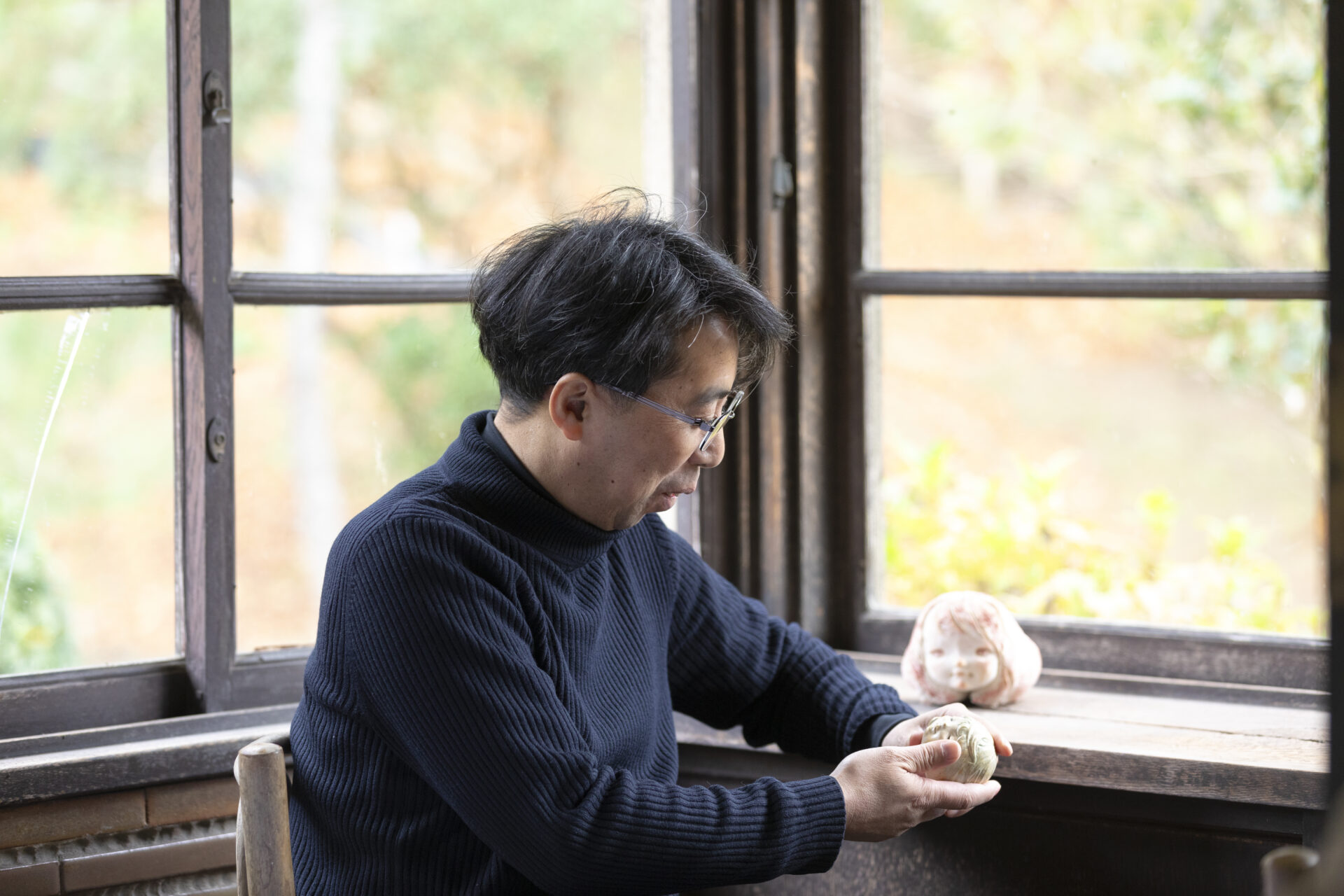
その指針となるのはやはり直感力。自身が気になることを裏づけするかのように、見えない世界、自然からのメッセージを松浦氏は常に受け取っています。
For MATSUURA, intuition is his compass. He remains attuned to unseen worlds, always receiving messages from nature and the intangible.
日常を結びながら変化を楽しむ
Embracing Change Through Everyday Connections
ずっと3という数字が気になり、惹かれるというのも、そのことさえきちんと意味をもたらしてくれるのです。3は結びを表し、三位一体、おむすびも米・塩・水という3つからでき結ばれている。古来からの‘結び‘にチカラを感じずにはいられないのです。
The number “3”, which he has always intrigued him, seems to carry significance. “3” symbolizes connection—the trinity, the sacred bond of rice, salt, and water in a simple rice ball—and the number resonates deeply with him. He is drawn to the ancient concept of musubi (connection), feeling its profound power in all aspects of life.
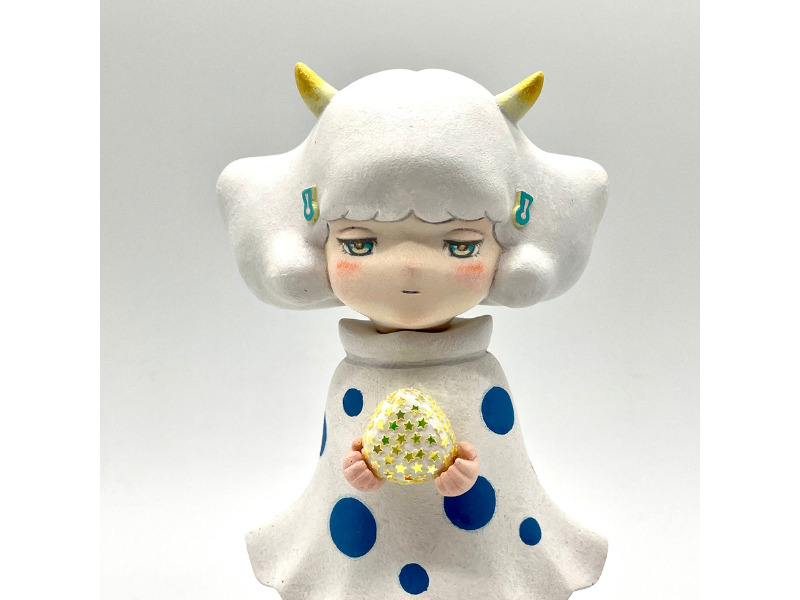
現在のアトリエ、旧久野邸を見つけた時もまた、家の近くを散策していた時、砂利山に向かって、創作活動の場を探して欲しいとお願いして見つけたこともあり、その土地との結びつきを感じたといいます。現在、年に2回定期的にアトリエの約800坪の敷地全体を開放していますが、それもまた地域と人と集って結びつき、楽しんでいる姿を土地に見せなければと、ここに住んだ使命のようなものを松浦氏は感じているのです。
When he found his current atelier, the former Hisano Residence, it was during a walk near his home. Gazing toward the gravel mountains, he asked for a place to create, and this space seemed to answer his call. The connection to the land felt undeniable. Currently, he opens the 800-tsubo (about 2,600 square meters) grounds of his atelier twice a year, inviting the local community to gather, connect, and celebrate together. For MATSUURA, this act is part of his mission, a way of showing the land the joy of human connection.
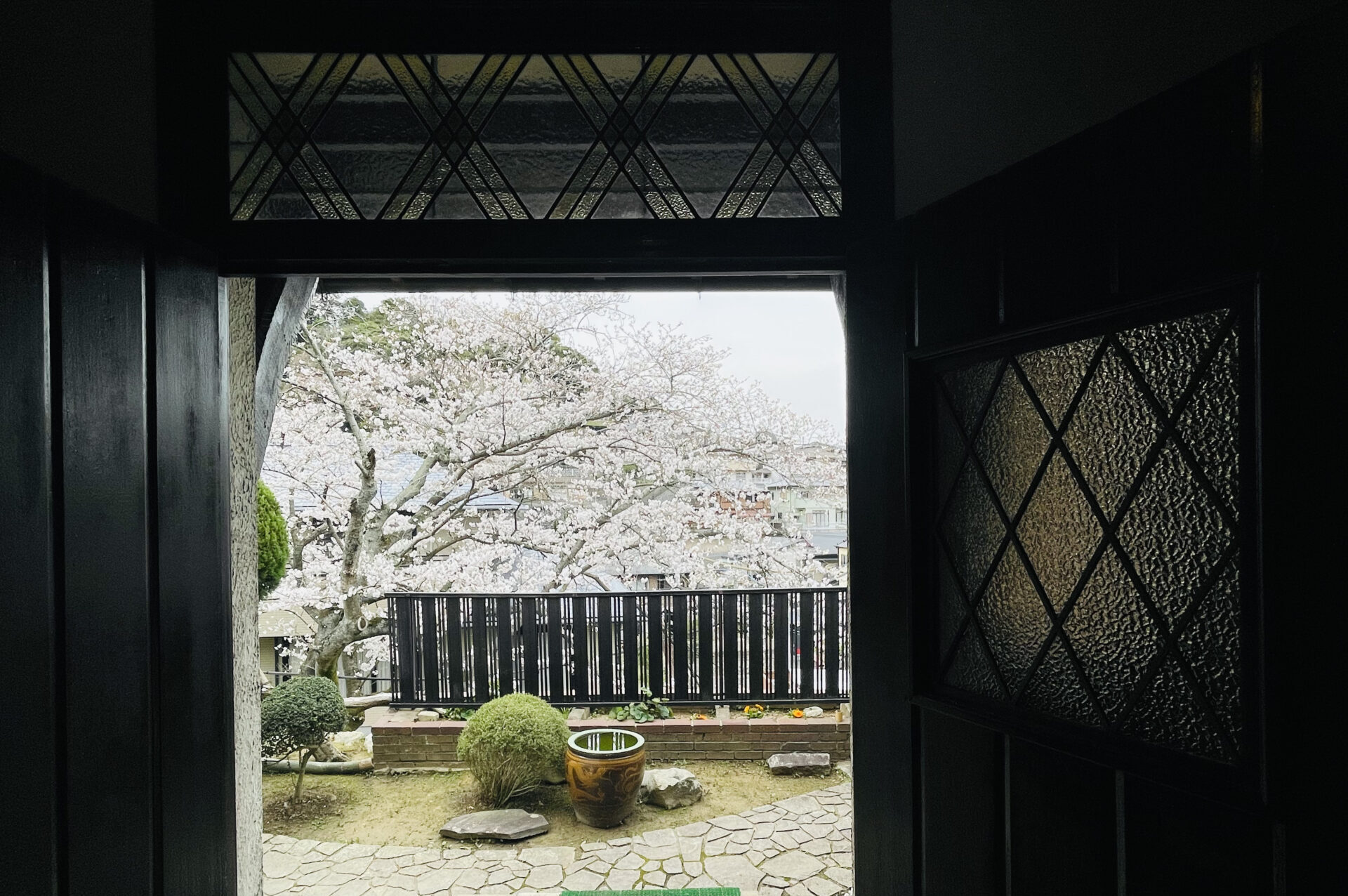
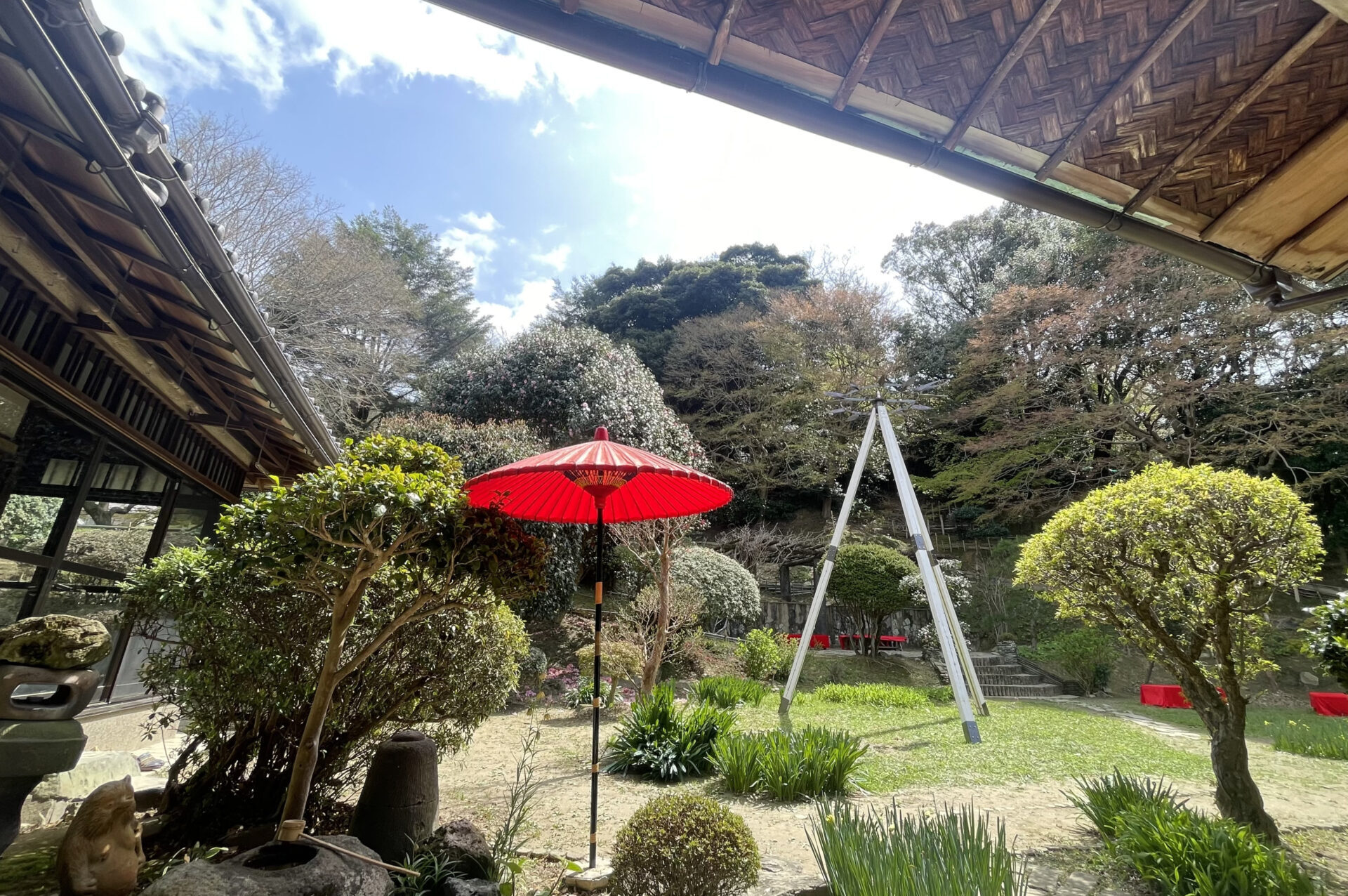
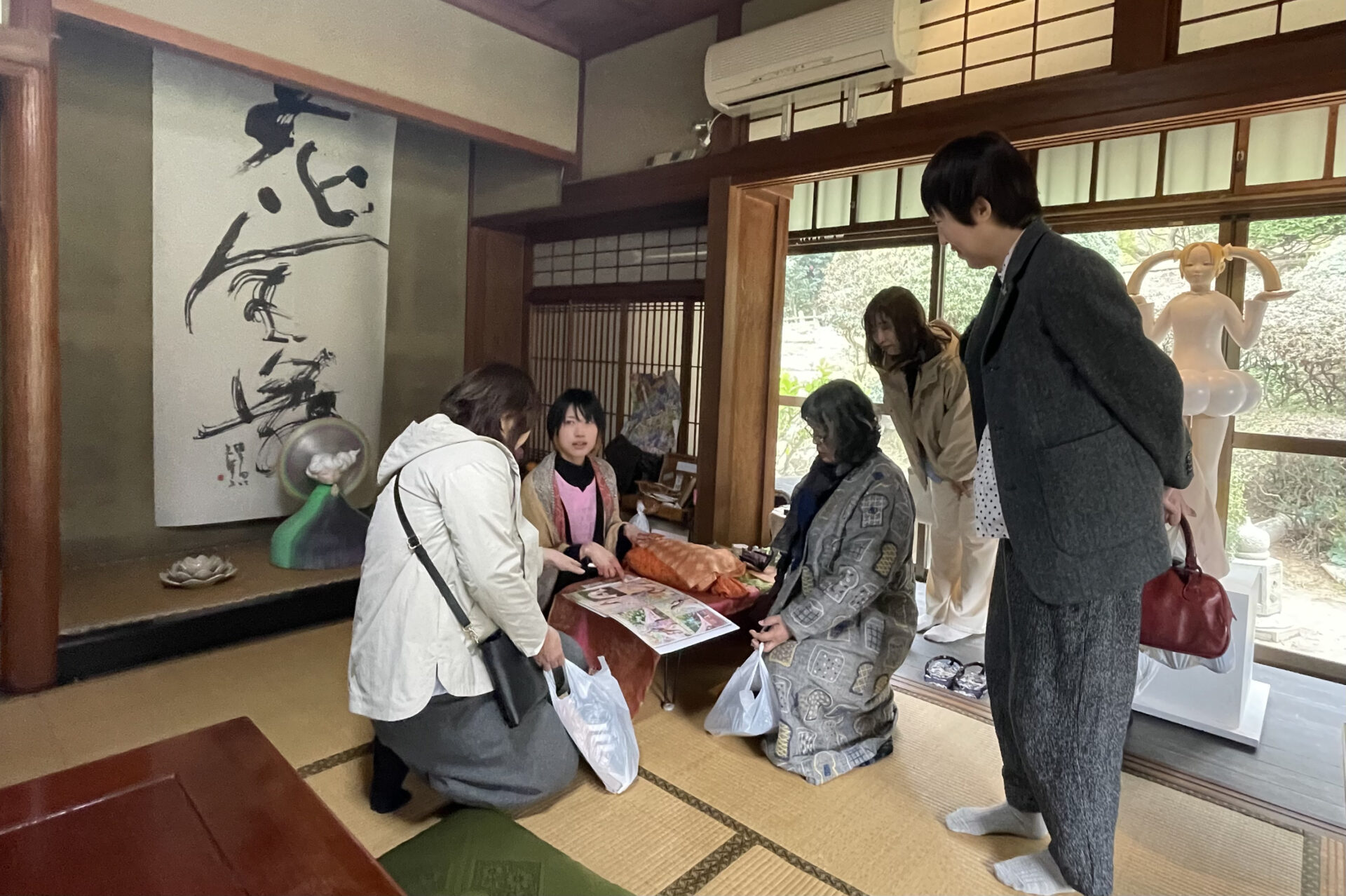
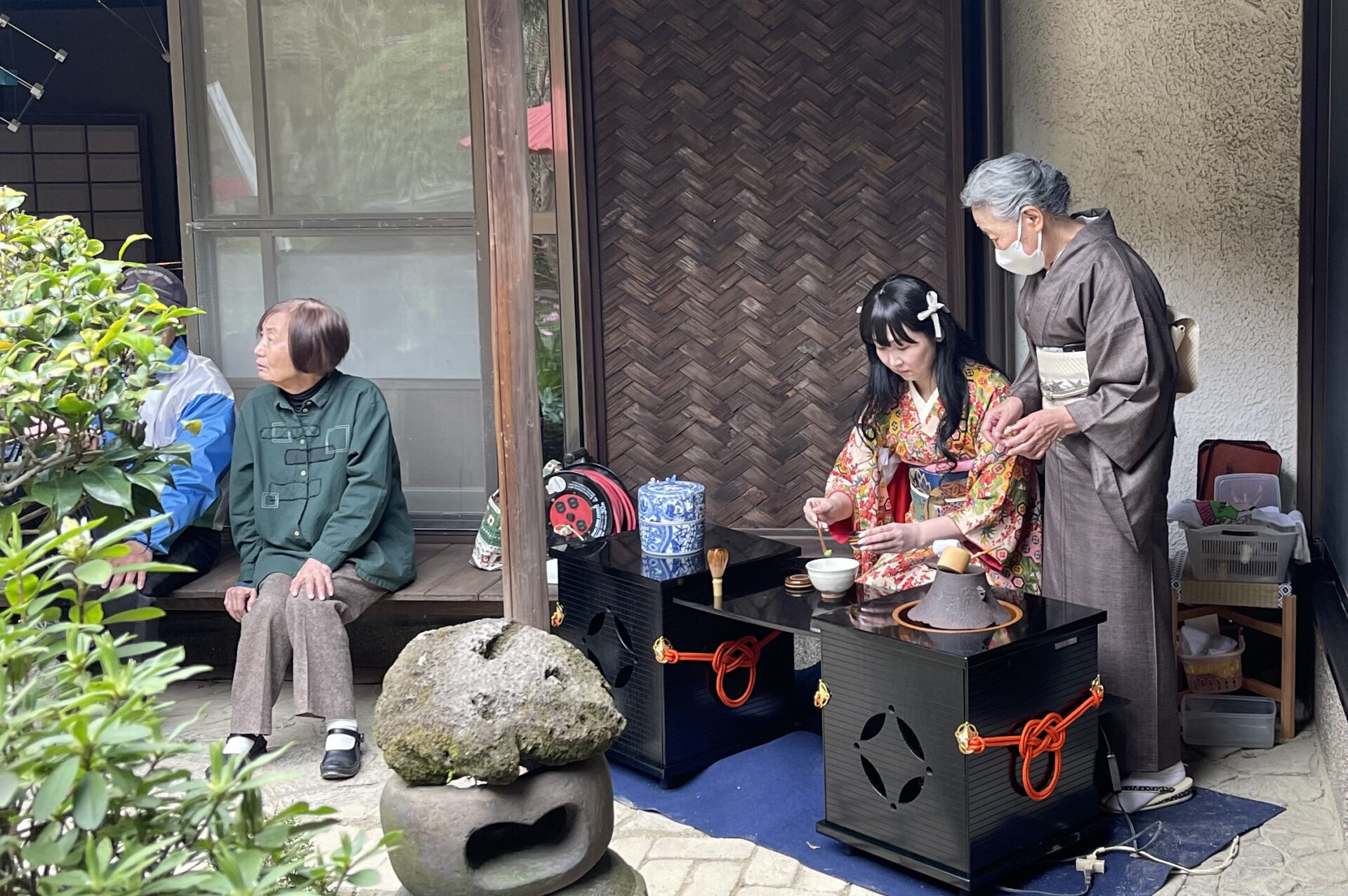
「何かを気に留めていると、いつか自然に結びついている、そのくらいのスタンスでちょうどいいかなと思う」
"If you remain attentive to something, it will eventually connect to something else naturally. I think that’s just the right pace," he reflects.
作品作りも、目には見えない想いも出来事も、湧き出る直感も、松浦氏の中では特別なことでなく、生活の中で一部であること。その大切なことを結びながら、松浦氏の世界は変化し続けていくのかもしれません。
For MATSUURA, creation, intuition, and the flow of life are all intertwined. What may seem extraordinary to others is, for him, simply a part of living. By weaving these connections, he continues to transform and expand his world.
